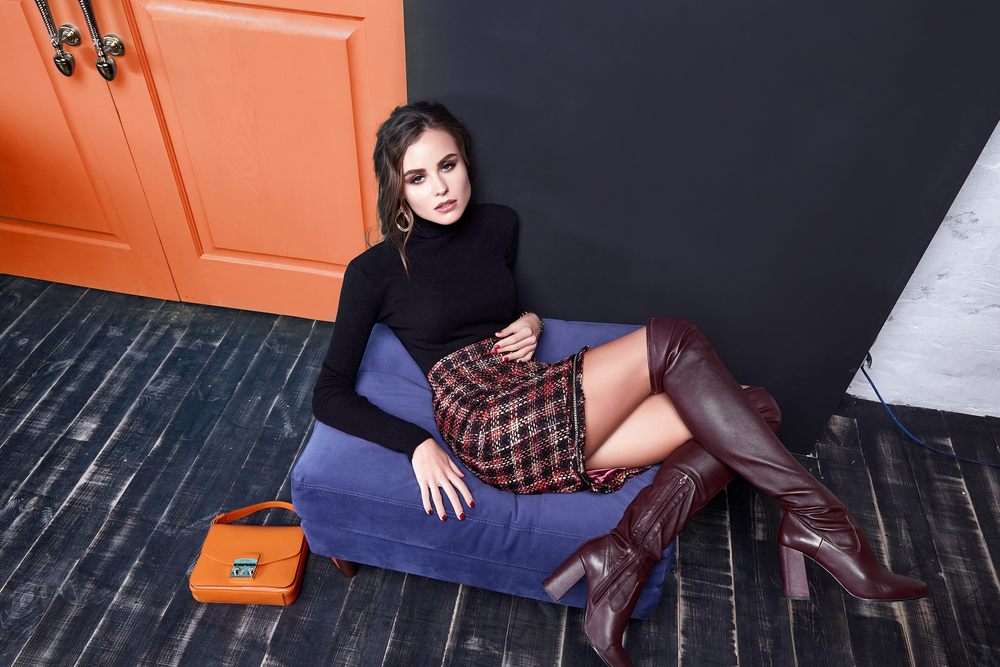
In the glamorous world of fashion and photography, a model's ability to strike poses effortlessly is what sets them apart. But behind those stunning photographs, there is a craft that requires skill, practice, and a deep understanding of one's body. In this article, we will unveil the secrets and skills behind the art of modelling , allowing you to appreciate the beauty and dedication that goes into creating those striking poses.
1. The Importance of Body Awareness
One of the first things a model learns is body awareness. Models must understand how their bodies move and how to control their posture, balance, and presence. This awareness allows them to convey various emotions and attitudes through their poses. They learn to elongate their necks, maintain straight spines, and engage their core muscles to create a strong and elegant silhouette.
2. Mastering Facial Expressions
While the body plays a crucial role in modeling , the face is equally important. Models must have the ability to emote through their expressions, conveying different moods that complement the overall concept of the photoshoot. From a sultry gaze to a bright smile, they must be able to adapt and showcase diverse emotions through their eyes, mouth, and body language.
3. Posing Techniques
Posing is the heart of modeling. It involves positioning the body in ways that are aesthetically pleasing and showcase the clothes, accessories, or products being featured. Models learn different posing techniques, such as the S-curve, 3/4 turn, or crossing their legs, to create visually interesting compositions that enhance the desired message. They also pay attention to details like hand placement and posture to ensure a cohesive and captivating image.
4. Utilizing Props
Models often work with props to add depth and context to the photoshoot. Whether it's a chair, a hat, or a bouquet of flowers, props can enhance the storytelling element in a photograph. Models learn to interact with props naturally, incorporating them into their poses in a way that feels organic and effortless. This skill brings life and uniqueness to each photoshoot.
5. Understanding Lighting and Angles
Lighting and angles play a crucial role in photography. Models learn to understand how different lighting setups can affect their appearance and how to position themselves to maximize their best features. They become experts in knowing which angle will best highlight their bone structure, emphasizing their cheekbones or jawline. This knowledge allows them to work harmoniously with the photographer, creating visually captivating images.
6. The Power of Collaboration
Modeling is not just about the individual. It is a collaborative process that involves a team of professionals working together to create art. Models must be open, adaptable, and patient to collaborate with photographers, stylists, makeup artists, and other members of the creative team. Effective communication and a willingness to take direction are vital skills that models must possess.
7. Confidence and Poise
Confidence and poise are essential traits for any model. They must exude self-assurance and carry themselves with grace, even in challenging situations. Models learn techniques to boost their confidence, such as positive self-talk, visualization, and maintaining a healthy lifestyle that supports physical and mental well-being. Only by believing in themselves can they truly shine in front of the camera.
Frequently Asked Questions:
Q1: How do models prepare for photoshoots?
A1: Models prepare for photoshoots by practicing their poses, researching the concept and mood of the shoot, and ensuring they have proper rest and nutrition for a fresh and energetic appearance.
Q2: What can I do to improve my modeling skills?
A2: To improve modeling skills, practice poses in front of a mirror, study the work of successful models, take modeling classes or workshops, and seek constructive feedback from professionals.
Q3: Is there an ideal body type for modeling?
A3: The concept of an ideal body type has evolved, and there are opportunities for models of various shapes and sizes. What matters most is confidence, skill, and the ability to bring a unique perspective to the industry.
Q4: How do models handle rejection?
A4: Rejection is a common part of the modeling industry. Models need to develop resilience, stay positive, and understand that rejection often has more to do with specific casting requirements rather than their abilities or attractiveness.
Q5: What sets apart a good model from a great one?
A5: While beauty is a given, a great model possesses adaptability, professionalism, creativity, and a willingness to continuously learn and grow. They understand that being versatile and collaborative are essential qualities that elevate their success in the industry.
In conclusion, the art of modeling goes beyond striking poses. It requires body awareness, facial expressiveness, expertise in various posing techniques, and the ability to work seamlessly with props, lighting, and angles. Collaboration, confidence, and poise are essential elements that make a model truly exceptional. By understanding these secrets and skills, we can better appreciate the artistry and dedication that goes into creating those mesmerizing photographs.
Other useful resources
- https://en.wikipedia.org/wiki/Category:Modeling_agencies
- https://en.wikipedia.org/wiki/Category:Modeling_(profession)
- https://en.wikipedia.org/wiki/Category:Models_by_modeling_agency
- https://www.planetmodelphoto.com/models/modeling/usa/charlotte/nc-north-carolina